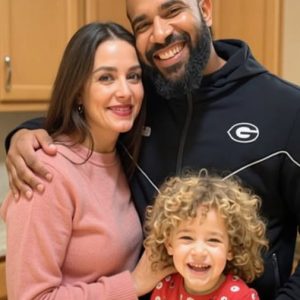On June 21, 1998, 23‑year‑old Danielle Morgan departed her family’s home for what she said would be a brief drive to meet a friend for coffee—and vanished without a trace. She wore everyday clothes, carried nothing, and casually posed for a neighbor’s photo before driving off in her black 1997 Camaro. By that evening, both she and her car were missing. Investigators found no skid marks, no crash site, no witnesses—and the case quickly grew cold in a quiet southern town.
The prime focus fell on Clay Harrell, a local businessman who’d been Danielle’s ex and was supposed to meet her that day. Clay claimed he hadn’t seen Danielle recently and insisted their breakup had been amicable. He publicly cooperated with investigations, spoke on TV, and helped keep the public narrative alive—including organizing a vigil. But no concrete leads ever emerged, and as years passed, the mystery faded from headlines—though not from her brother Mason’s resolve.
Then, in May 2010, everything changed. A contractor bought a foreclosed storage unit over 200 miles away for roughly $112, and in that unit lay Danielle’s Camaro—locked, dusted over, keys in place, and bearing a clean bullet hole above the emblem. The VIN matched. Investigators noted oddities: the dust seemed too fresh, partial fingerprints were lifted, and a locked glove box remained shut. Moreover, the storage unit was leased under a shell company. Mason, convinced something had been hidden, forced open that glove box—and inside found a cassette tape and a gas receipt timestamped shortly after she vanished. On the tape, Danielle’s trembling voice warned, “I found things I shouldn’t have… I think Clay knows.”
With that evidence in hand, Mason approached a longtime journalist named Ellie Mazur. Together, they revisited dormant clues: undeveloped film negatives, a storage manifest, shipping logs, and cryptic notes of Danielle’s. These tied her disappearance to Bayline Freight, Clay’s former workplace, and a mysterious figure known only as “the broker.” A leaked warehouse video further implicated Clay, with a voice instructing an associate: “Get her in the car… we’ll keep her cold. Broker’s orders.”
Following Danielle’s clues about metal stairs and yellow light, Mason and Ellie located an abandoned diner once served by Bayline. Behind walk‑in freezers, they discovered a hidden locked door. Using bolt cutters, police and Mason forced entry—and found Danielle, alive but bound, in a distant room. She confirmed the truth: she had uncovered a dark network involving shipping misrouting, forced disappearances, and clandestine transfer of victims. Clay and his cousin Darren were implicated in abducting her, on orders from the broker. When pressure mounted, she was moved again to avoid detection.
State investigators raided properties tied to Darren and unearthed hours of tapes, missing‑person flyers, and directives from previously unknown actors. Clay fled. Darren vanished. A burnt truck bearing a cryptic note (“Ask Darren”) was discovered. Mason later unlocked a safety deposit box tied to Danielle, revealing memos stamped “Broker District Three” and a tape naming the broker: Carl B. Merton. Records showed Merton had long ago adopted a new identity and died in a car crash, making him untouchable in court—yet the structure of his operation was laid bare.
Though Clay eventually left a submerged truck with a partial confession, he denied direct violence. Danielle underwent months of recovery and testified before a grand jury. Her brother visits the locked Camaro in the evidence bay—its dusty interior and that faint smiley face on the windshield etched in memory. The case stands as a testament to the power of persistence, proof that cold cases can break, and that someone committed to finding the truth can shift the balance even decades later.




